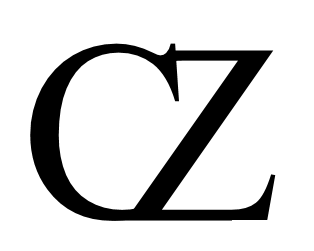
Drawings of various sea serpents by or for alleged eyewitnesses. Clockwise from upper left: the Valhalla sea serpent (1905), the Pentland Firth sea serpent (1919), the Princess sea serpent (1856), Reutz and Tuchsen's sea serpent (1755), and the Sacramento sea serpent (1877).
Sea serpents are a category of large marine cryptids described as at least partially serpentine in shape, several distinct types of which have been reported. Sea serpent sightings have occurred in all the world's seas – the Atlantic, Pacific, Indian, and Arctic Oceans, and very rarely the Southern Ocean – but remain most common in temperate waters, particularly in the Northern Hemisphere.[1][2]
Discounting mistaken observations of known species and natural phenomena, and deliberate hoaxes, most cryptozoologists have concluded that more than one possible unknown animal is described in sea serpent sightings, and some cryptozoologists have attempted to devise classification schemes for these animals. The Heuvelmans system[1] is the most widely-referred to classification system, but it has been criticised and modified[3][4] by later cryptozoologists, and subsequent general classification attempts include the Coleman-Huyghe system,[5] the Champagne system,[6] and the Marshall system.[7] The classic sea serpent is an elongated animal characterised by humps or by pronounced vertical undulations, which is often theorised to be some species of serpentine marine mammal, such as a cetacean, although a variety of natural phenomena have also been proposed as explanations for such sightings. The other main type is the longneck, which is popularly believed to be a surviving plesiosaur, but is usually classified in cryptozoological systems as a giant, long-necked form of pinniped. Other, less commonly-reported types appearing in all systems include the great sea centipede, marine saurian, and father-of-all-the-turtles.
A number of cryptozoologists have suggested connections between sea serpents and certain lake monsters, particularly long-necked types.[8][9] The study of both sea serpents and lake monsters is sometimes controversially called dracontology.[5]
Sightings[]
Atlantic Ocean[]
- List of sea serpent sightings in the Atlantic Ocean (-1769)
- List of sea serpent sightings in the Atlantic Ocean (1770–1816)
- List of sea serpent sightings in the Atlantic Ocean (1816–1847)
- List of sea serpent sightings in the Atlantic Ocean (1848–1891)
- List of sea serpent sightings in the Atlantic Ocean (1892–1913)
- List of sea serpent sightings in the Atlantic Ocean (1914–1945)
- List of sea serpent sightings in the Atlantic Ocean (1946–1989)
- List of sea serpent sightings in the Atlantic Ocean (1990–)
- List of sea serpent sightings in the Mediterranean Sea
Pacific Ocean[]
- List of sea serpent sightings in the Pacific Ocean (-1847)
- List of sea serpent sightings in the Pacific Ocean (1848–1891)
- List of sea serpent sightings in the Pacific Ocean (1892–1913)
- List of sea serpent sightings in the Pacific Ocean (1914–1945)
- List of sea serpent sightings in the Pacific Ocean (1946–1989)
- List of sea serpent sightings in the Pacific Ocean (1990–)
Indian Ocean[]
- List of sea serpent sightings in the Indian Ocean (1848–1891)
- List of sea serpent sightings in the Indian Ocean (1892–1913)
- List of sea serpent sightings in the Indian Ocean (1914–1945)
- List of sea serpent sightings in the Indian Ocean (1946–1989)
Arctic Ocean[]
Southern Ocean[]
Notes and references[]
- ↑ 1.0 1.1 Heuvelmans, Bernard (1968) In the Wake of the Sea-Serpents, Hart-Davis, ISBN 9780246643124
- ↑ Eberhart, George M. (2002) Mysterious Creatures: A Guide to Cryptozoology, ABC-CLIO, Inc., ISBN 1576072835
- ↑ Woodley, Michael (2008) In the Wake of Bernard Heuvelmans: An Introduction to the History and Future of Sea Serpent Classification, CFZ Press, ISBN 978-1905723201
- ↑ Shuker, Karl P. N. (2016) Still In Search Of Prehistoric Survivors: The Creatures That Time Forgot?, Coachwhip Publications, ISBN 978-1616463908
- ↑ 5.0 5.1 Coleman, Loren & Huyghe, Patrick (2003) The Field Guide to Lake Monsters, Sea Serpents and Other Mystery Denizens of the Deep, TarcherPerigree, ISBN 978-1585422524
- ↑ Champagne, Bruce A. "A Classification System for Large, Unidentified Marine Animals Based on the Examination of Reported Observations," Elementum Bestia: Being an Examination of Unknown Animals of the Air, Earth, Fire and Water (2007), Lulu Press, ASIN B001DSIB2W
- ↑ Marshall, Carl "21st Century Sea Serpents," Animals & Men, No. 64–65 (June 2018)
- ↑ Costello, Peter (1974) In Search of Lake Monsters, Coward, McCann & Geoghegan, 9780698106130
- ↑ Champagne, Bruce A. "A Preliminary, Comparative Type Proposal For Large, Unidentified Marine and Freshwater Animals," The Journal of Cryptozoology Vol. 4 (December 2016)
